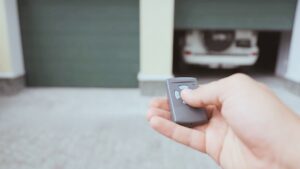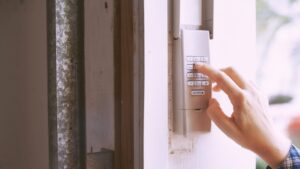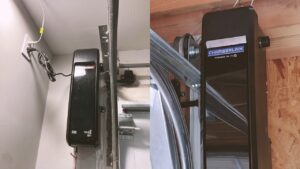When you’re in a hurry to get going, there’s nothing more frustrating than a garage door that won’t close.
Despite your best efforts, you push the button, and it begins to descend, only to reverse course and stay wide open. Sound familiar?
A garage door that won’t close properly is one of the main garage door problems that can be annoying and even dangerous to deal with. Over time, issues such as misaligned sensors or a worn-out torsion spring may render your garage door inoperative, leaving your home and belongings vulnerable to theft and damage.
While these are common culprits, sometimes the cause might bewilder homeowners, like a faulty remote control or freezing temperatures.
In this comprehensive article, we will be exploring 14 potential reasons why your garage door won’t close, accompanied by practical do-it-yourself fixes to help you troubleshoot and resolve the issue. Furthermore, we will also provide steps to prevent these problems from recurring, ensuring that your garage door remains a reliable and essential part of your home.
So, let’s dive right in and get that garage door back on track!
Common Reasons Why The Garage Door Won’t Close
From misaligned sensors to broken springs, let’s explore the common reasons why your garage door won’t close.
1. An Object is Blocking the Garage Door
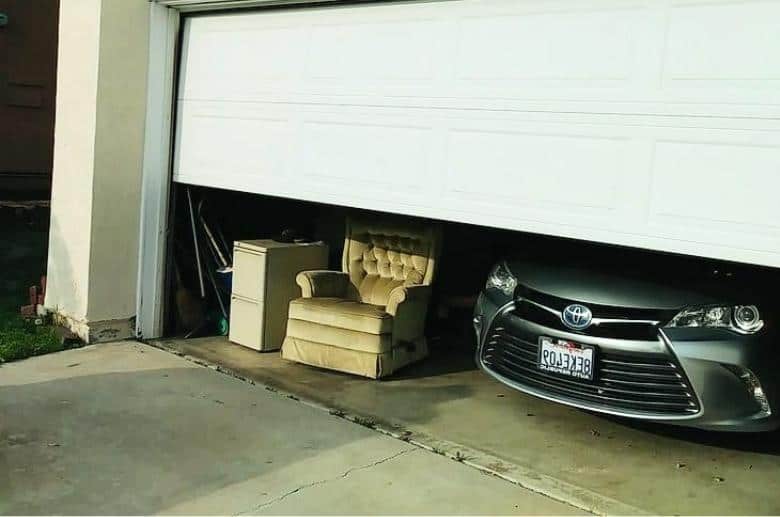
When an object obstructs the sensors or the door’s travel path, the garage door opener detects the obstruction and reverses the door’s motion to prevent damage or injury.
How do I fix it?
- Inspect the area near the garage door to see if any visible objects are blocking the path or sensors. If you find an object, remove it and try closing the door again.
- Clean the garage door sensors using a microfiber cloth, as dirt and dust can sometimes cause false readings.
- Check the alignment of the sensors to ensure proper communication between them.
If the problem persists after these initial steps, it may be advisable to consult a trained professional to avoid further damage.
How do I prevent this?
Preventing this problem in the future can be as simple as keeping the garage floor and surrounding areas tidy and free of clutter. Regularly check for any debris or blockages that may disrupt the door’s path or the safety sensors’ signals.
2. Sensors
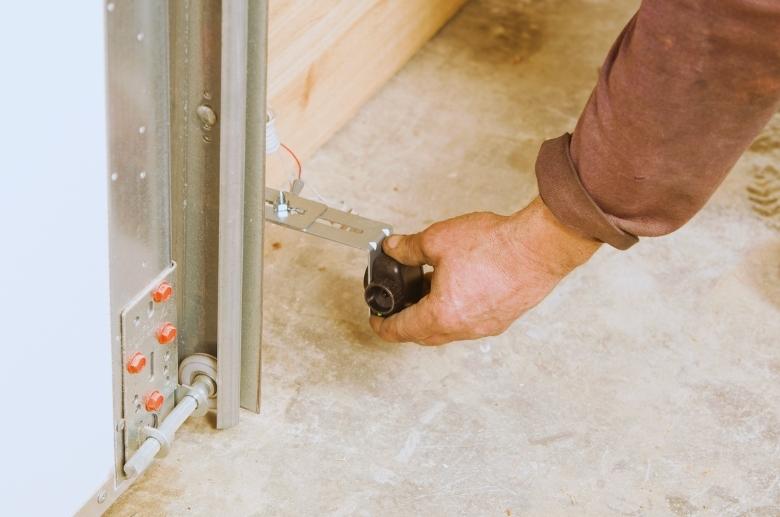
The sensor prevents the door from closing when an object breaks the beam. However, if the sensors are misaligned, dirty, or damaged, the garage door may refuse to close, even if there is no obstruction.
How do I fix it?
- If they appear to be tilted, gently adjust them until they are pointing directly at each other and the LED light on each sensor remains solid.
- Clean the sensor lenses by gently wiping away any dust, grime or dirt with a soft cloth.
- Ensuring that both sensor units are securely attached to their mounting brackets is also essential.
If the issue persists, inspect the wiring connected to the sensors for any signs of damage or disconnection. In some cases, professional help may be needed, especially if you’re unable to identify the problem or the issue involves extensive re-wiring.
How do I prevent this?
Make sure to clean the sensor lenses periodically to remove dust, dirt, and cobwebs that may impede their functionality. Additionally, during regular garage door inspections, ensure that the sensor units are tightly secured and properly aligned.
3. Tracks and Rollers
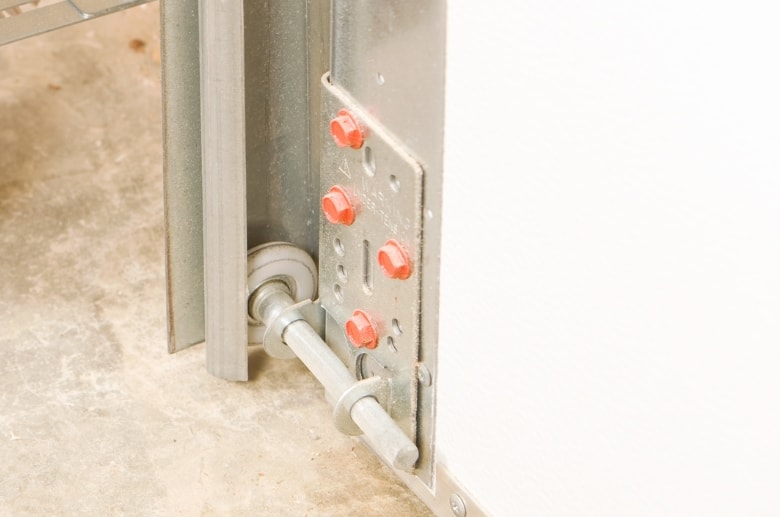
Over time, tracks and rollers can become misaligned, dirty, worn, or damaged due to wear and tear or external factors. This can cause the garage door to jam, make loud noises, or even prevent it from closing completely.
How do I fix it?
- Visually inspect them for any obvious signs of damage, such as dents or rust. You can use a rubber mallet to gently tap the tracks back into alignment or remove debris that may be obstructing the rollers.
- If the rollers are worn out, you can replace them with new ones that are compatible with your garage door model.
- Lubricating the tracks and rollers with a high-quality silicone-based spray can also improve their operation.
If the issues are extensive or you need help with how to repair them properly, it’s best to call a professional garage door technician to fix the problem and ensure your safety.
Connect With A Garage Expert
Connect with local experts, Compare quotes, Get the best price.
How do I prevent this?
To prevent issues with the tracks and rollers, it’s essential to perform regular garage door maintenance. This includes inspecting the tracks for damage or misalignment, cleaning debris from the rollers and tracks, and lubricating these components periodically.
Regular garage door inspections and tune-ups by a professional technician can also help identify potential problems before they become more serious and costly.
4. Remote
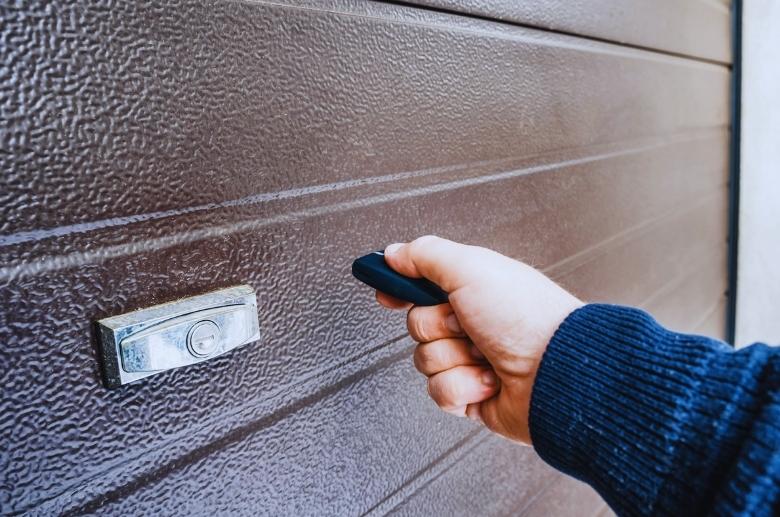
Problems may arise when the remote needs reprogramming, its batteries are low or dead, or there is interference with the radio signal. Interference can be caused by nearby electronic devices or even physical objects obstructing the signal.
How do I fix it?
- Check the batteries – Old or weak batteries might not provide enough power to transmit the signal effectively. Try replacing the batteries.
- Reprogramming the remote – Refer to your garage door opener’s user manual for instructions on reprogramming your remote. This process typically involves pressing a specific series of buttons on the remote and the garage door opener.
- Eliminate interference – In some instances, devices such as LED lights or other electronics might cause interference with the remote signal. Try turning off or removing potential sources of interference to determine if they are causing the issue.
If none of these steps work, consulting a professional garage door technician might be necessary, as the issue could be more complex and require specific expertise.
How do I prevent this?
Maintain a regular schedule for replacing the remote’s batteries at least once a year, and make sure the remote is always securely stored and handled with care to prevent damage.
Additionally, ensure there are no objects or devices near the garage door opener that may be causing interference with the remote’s signal, such as metal or electrical equipment.
5. Trolley
If the trolley becomes misaligned, damaged, or obstructed by debris, it can prevent the door from closing properly or even moving at all. Trolley issues typically result in either the garage door getting stuck midway through its travel or refusing to move altogether.
How do I fix it?
- Inspect the trolley and the garage door opener chain or belt for any signs of damage or wear. If any parts appear damaged, you will need to replace them.
- Ensure the trolley is properly aligned with the track by checking for gaps, bends, or misalignments in the rail. If you notice any obstructions or debris, clean the track and ensure it is free of any obstructions.
- Applying a garage door lubricant to the track and the trolley is also essential to reduce friction and wear.
If you are unsure how to perform any of these tasks or the door still doesn’t close after attempting these fixes, it’s best to consult a professional for further assistance.
How do I prevent this?
Make sure to inspect the trolley, track, and other components periodically for any signs of wear or damage. In addition, clean the track and lubricate moving parts regularly to ensure smooth operation and prevent excessive wear.
6. Gears
Most garage door openers on the market today have plastic gears that are designed to break under excessive force. This safety mechanism helps to protect other internal components from damage. Still, it can, unfortunately, create a malfunction when they wear down or break, ultimately preventing the garage door from closing properly.
How do I fix it?
- First, unplug the garage door opener to ensure safety while working on it.
- Carefully open the garage door opener casing to access the gears. It is essential to refer to your garage door opener’s manual for guidance on this, as different models may have specific instructions for exposing the gears.
- Inspect the gears for any visible damage or wear. If the gears are damaged or worn out, they will need to be replaced.
You may either replace the parts yourself, following the instructions in your manual or opt for a professional garage door technician for assistance if you aren’t comfortable with DIY repairs.
How do I prevent this?
Lubricate the gears and other moving parts as needed to minimize friction and wear. Additionally, make sure that your garage door is properly balanced and in good condition. This will reduce stress on the gears and other components, prolonging their lifespan and decreasing the likelihood of component failure.
7. Cables
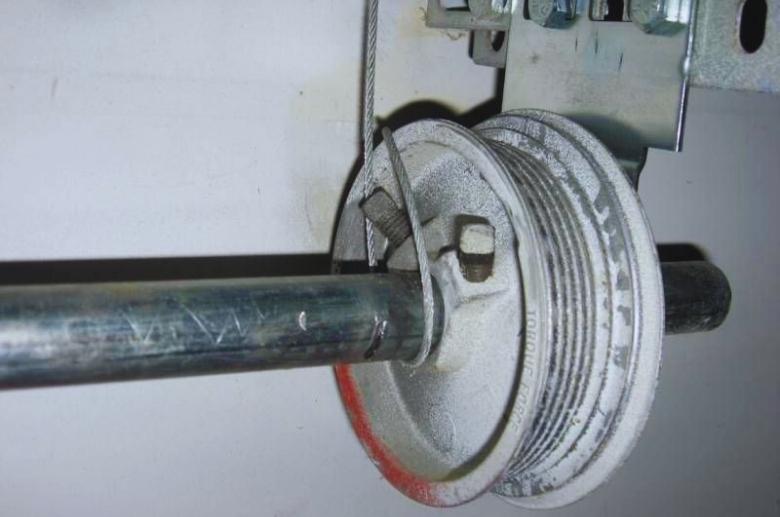
Cables are under constant stress and wear over time, leading to fraying or even snapping. Additionally, the mounting hardware for the cables can also become damaged or loose, causing the cables to misalign or become entangled.
If the cables are damaged, the door will not be able to receive the necessary tension to close properly, causing it to remain open or only partially closed.
How do I fix it?
- Unplug the garage door opener to ensure safety while working on it.
- Then, gently use a pair of pliers to realign the cables on the drum, ensuring they are correctly seated in the grooves.
However, if you notice that the cables are severely damaged or frayed, it is best to seek professional help.
Misaligned or damaged cables can cause accidents or further damage to other garage door components, so it is crucial to address this issue promptly.
How do I prevent this?
Ensure that you routinely inspect the cables for signs of wear and tear and replace them as necessary. Additionally, lubricating the cables with a high-quality garage door lubricant can help prolong their life and reduce the risk of fraying.
8. Springs
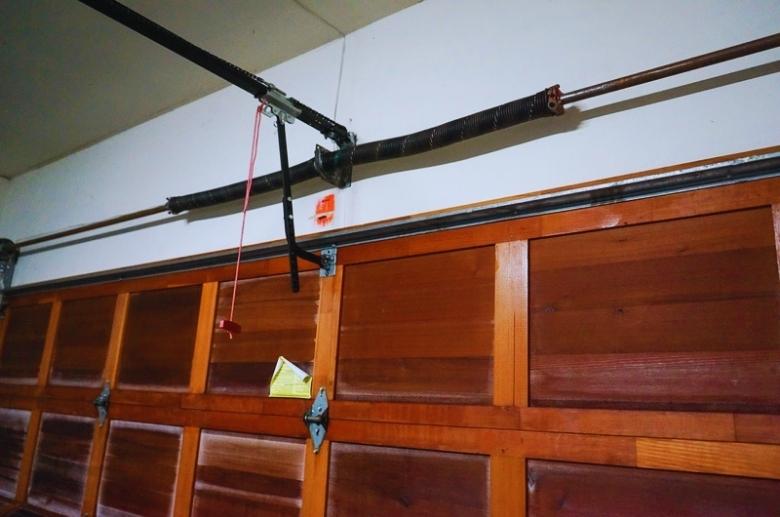
Springs may wear out, become loose or even break, which can compromise the door’s ability to close fully. A dysfunctional spring system can cause stress on the motor and other components, leading to further damage and a potential safety hazard.
How do I fix it?
- Before attempting any DIY fixes, make sure to disconnect the garage door opener to prevent any accidental activation during the process.
- Inspect the springs visually for any signs of wear, such as gaps or breaks.
- If the issue appears to be a loss of tension, you might be able to adjust the tension on the springs by carefully following the manufacturer’s guidelines.
However, if the springs are damaged or broken, it is highly recommended to seek professional assistance.
Garage door springs are under high tension, and attempting a DIY replacement can result in severe injury or damage to your property.
How do I prevent this?
Check for any signs of wear or damage at least twice a year and, if necessary, seek professional advice for any adjustments or replacements. Additionally, investing in high-quality springs with an extended lifespan could save you from frequent replacements and potential issues down the line.
Connect With A Garage Expert
Connect with local experts, Compare quotes, Get the best price.
Uncommon Reasons Why The Garage Door won’t Stay Closed
9. Cold Temperature
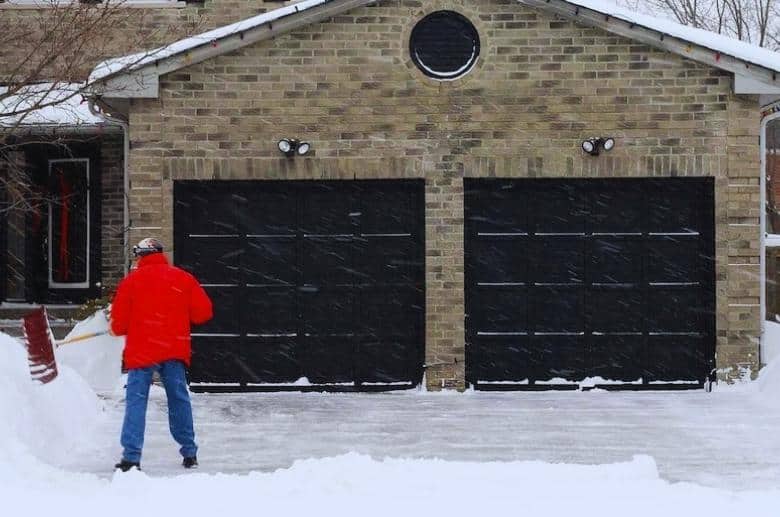
During the colder months, freezing temperatures can cause your garage door to malfunction and sometimes prevent it from closing altogether.
The drop in temperature can cause motor oil to thicken, making it difficult for the door opener to operate efficiently. Furthermore, metal components, such as springs and tracks, can contract due to the cold, making it increasingly difficult for the door to move smoothly.
In worst-case scenarios, frost and ice can cause the garage door to freeze shut, making it nearly impossible for the door to close without significant force or risking damage to the system.
How do I fix it?
- Use a hairdryer or heat gun to carefully melt any ice buildup around the edges of the door, ensuring not to overheat the door material or components.
- Lubricate your garage door’s moving parts, such as the hinges, tracks, and springs, with silicone-based garage door lubricant. This type of lubricant is less likely to harden in cold weather, allowing for smooth operation.
- Inspect the garage door opener for thickened motor oil. If you find that the oil has become too thick, replace it with a low-viscosity oil that is more resistant to cold temperatures.
If you need help changing the motor oil in your garage door opener, it is always best to consult your owner’s manual or seek professional assistance.
How do I prevent this?
Before the colder months arrive, clean and lubricate all moving parts of the garage door system with a silicone-based lubricant to ensure smoother operation at lower temperatures. Additionally, consider insulating your garage door to reduce temperature fluctuations and prevent the weather seal from freezing to the ground.
Installing a garage door threshold seal can also help create a barrier between the door and the ground, ensuring the door operates smoothly throughout the winter season.
10. Malfunction Logic Board
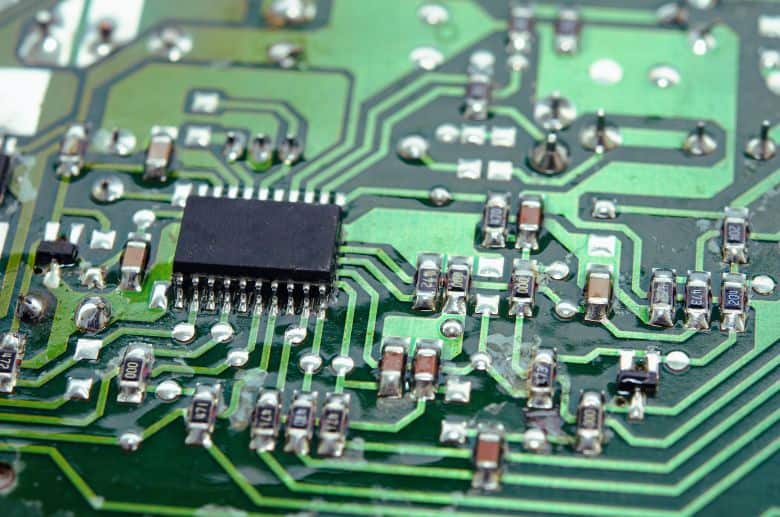
The logic board is essentially the brain of the garage door opener, as it processes and regulates the electronic commands from the remote control and sensors. When the logic board malfunctions, it can fail to receive or properly interpret signals causing the garage door to remain open or stop functioning altogether.
How do I fix it?
- Unplug the garage door opener and remove the cover to access the logic board.
- Inspect the board for any visible signs of damage, such as burnt or corroded components.
- It might be time to replace the board if you notice any damage. You can generally find replacement logic boards for your specific garage door opener model online or at local hardware stores.
However, it is recommended to seek professional help from a qualified garage door technician, especially if you are not familiar with electrical components and circuitry.
How do I prevent this?
It’s vital to perform regular maintenance checks and keep the system free from dust and debris that could interfere with the electrical components. Additionally, installing a surge protector for your garage door opener can effectively safeguard the logic board from potential damage caused by power surges.
11. Travel Limits And Forces Setup
The travel limits determine how far your garage door travels before it stops, while the forces govern the resistance the door has when moving. If the travel limit is set too high, the door may hit the ground, falsely interpret it as an obstruction, and reverse back to an open position. Similarly, if the force setting is too low, the door may encounter resistance while moving, resulting in it stopping prematurely.
How do I fix it?
Consult your garage door opener’s owner’s manual to locate and understand how to adjust the travel limits and forces settings.
Most garage door openers have two dials or screws, one for travel limits and another for forces. These can be turned to either increase or decrease the corresponding settings.
Begin by making small adjustments and testing the door’s operation, continuing until the issue is resolved.
If you’re uncomfortable making these adjustments yourself, or if the problem persists despite your best efforts, it may be best to contact a garage door technician for assistance.
How do I prevent this?
Ensure proper installation and setup of the garage door opener from the beginning. Always follow the manufacturer’s instructions when installing and adjusting the opener. Additionally, it’s crucial to perform regular maintenance checks on your garage door system, including monitoring the travel limits and force settings.
Periodically ensuring these settings are in line with the manufacturer’s recommendations can help prevent future issues and ensure the smooth operation of your garage door.
12. Disconnected Emergency Release Cord
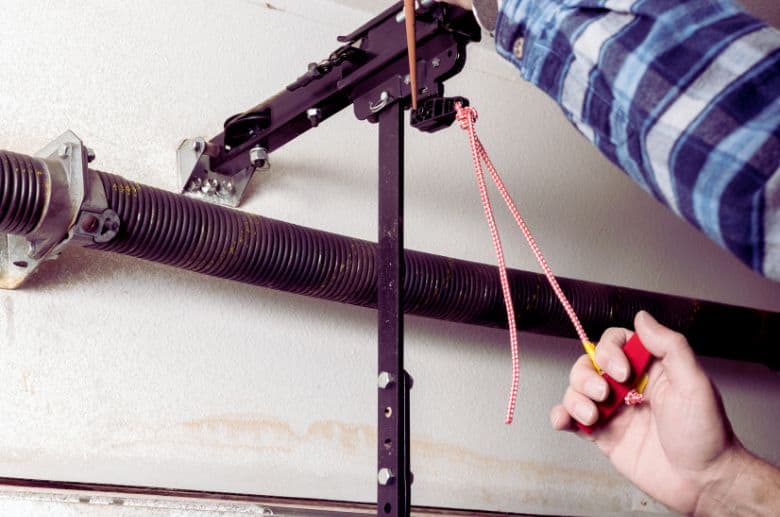
The disconnect emergency cord is a safety feature integrated into most garage door openers. It allows homeowners to manually operate their garage doors in case of a power outage or a malfunctioning opener. When this switch is engaged, it disconnects the garage door from the opener mechanism, preventing the door from closing automatically.
How do I fix it?
- First, locate the switch, which is usually attached to a rope or cord hanging from the garage door opener motor.
- Gently pull on this cord to disengage the disconnect switch, reconnecting the door to the opener mechanism.
- Test the garage door opener to ensure the door now closes properly.
If the problem persists, consult the owner’s manual for your specific garage door model or seek professional assistance.
How do I prevent this?
Be cautious when storing items near the garage door opener motor, ensuring that they do not inadvertently engage the switch. Additionally, educate family members about the purpose of the switch and instruct them not to pull on the cord unless necessary during a power outage or malfunction. Regular maintenance checks of the garage door opener itself can also mitigate any issues that could lead to the need for manual operation.
13. Garage Door Has Been Locked Manually
Sometimes, while performing maintenance tasks or during instances where home security is a concern, homeowners might manually lock their garage door, effectively disabling the automatic opener.
When this happens, attempting to close the garage door using the opener will result in either no movement or the door stopping partway.
How do I fix it?
- Locate the manual lock on the garage door, which usually consists of a sliding bar or a knob on the inside of the door.
- Next, disengage the lock by either sliding the bar back or turning the knob to the unlocked position. Double-check that the lock is fully disengaged before attempting to use the automatic opener again.
If the problem persists after ensuring that the manual lock is disengaged, it may be time to consult a professional for further assistance.
How do I prevent this?
It is important to raise awareness and establish a habit of checking the manual lock’s status. You can do this by making a mental note to double-check the lock after performing any maintenance tasks or after securing your home for extended periods.
Furthermore, you could attach a label or sign near the manual lock as a reminder to yourself and other family members, ensuring everyone knows its presence and functionality.
14. Loss of Power Source
A total loss of power, such as a blackout, will render the garage door inoperable. Still, even intermittent power feeding the garage door system can cause glitches preventing the door from closing fully. Electrical fluctuations, such as brownouts or issues with the wiring, can lead to unexpected stops or erratic movements while the door attempts to close.
How do I fix it?
- Check if there is an outage in your area or if there are tripped breakers in your electrical panel. Reset the breakers if necessary and carefully test the garage door operation.
- If the power is fine and the issue persists, there may be a problem with the garage door motor or wiring, and it is best to seek professional help.
How do I prevent this?
Schedule an annual inspection by a qualified electrician to identify potential problems and ensure the continuous flow of electricity. Additionally, investing in a surge protector for your garage door motor can protect it from damage caused by electrical surges, preventing costly repairs or replacements.
Final Thoughts from the Experts
From blocked sensors to misaligned tracks, these 14 reasons we discussed can provide guidance on the root cause of the problem and potential solutions. However, it’s crucial to remember that every garage door system is unique, and certain issues may require a more specialized approach.
As garage door experts, our advice is to tread cautiously when attempting DIY fixes. While some are simple enough for homeowners to handle with a basic understanding, others may present risks resulting in property damage or personal injury. It is always better to assess the situation accurately and, if doubts arise, stop using the garage immediately and call for professional help.
Ready to learn even more about garage doors? We invite you to delve deeper into the world of garage doors by exploring our extensive collection of blog posts.


